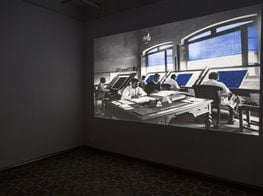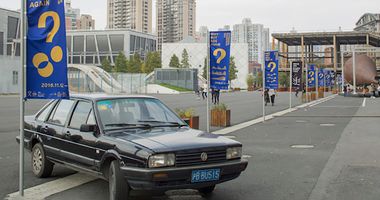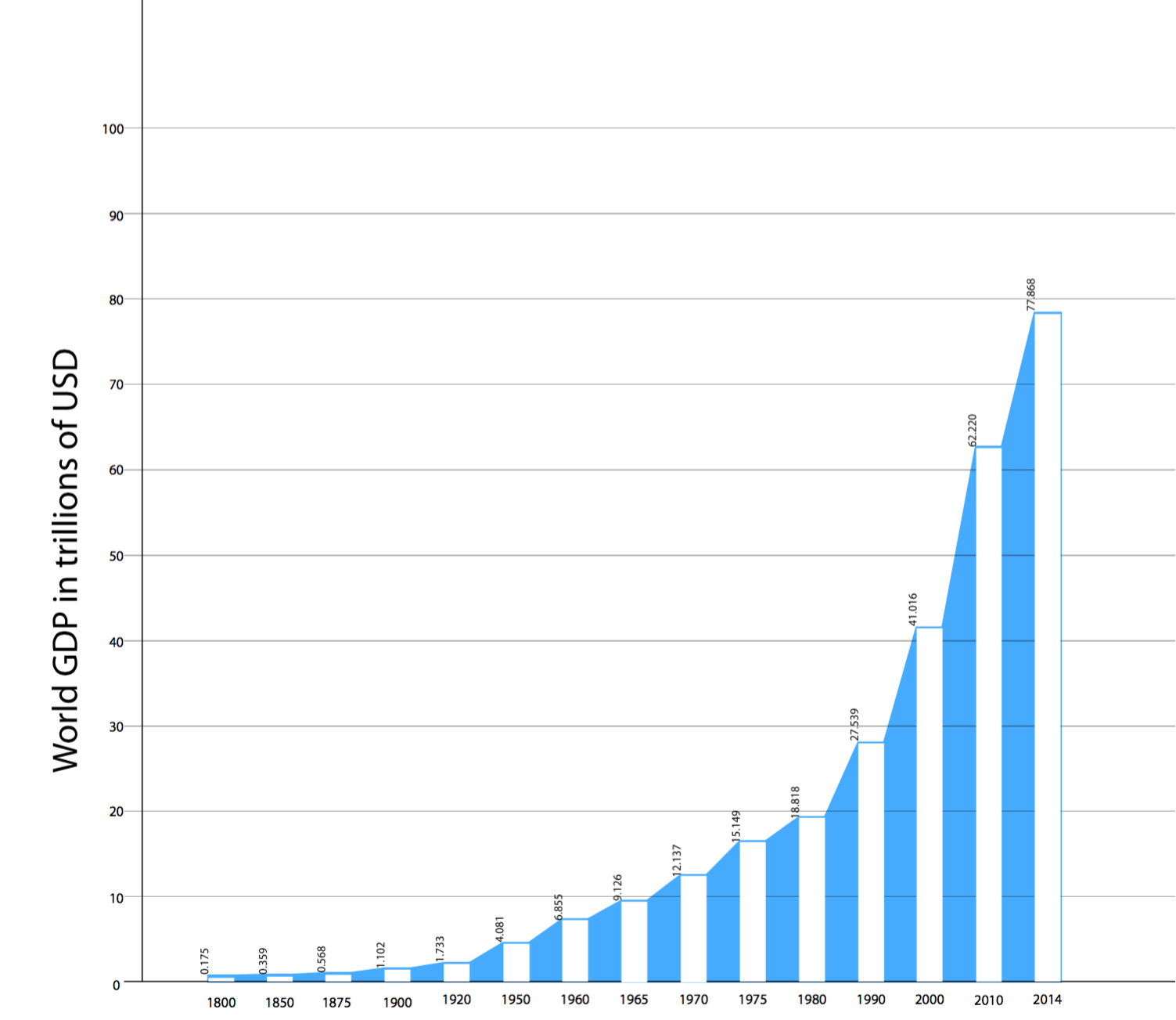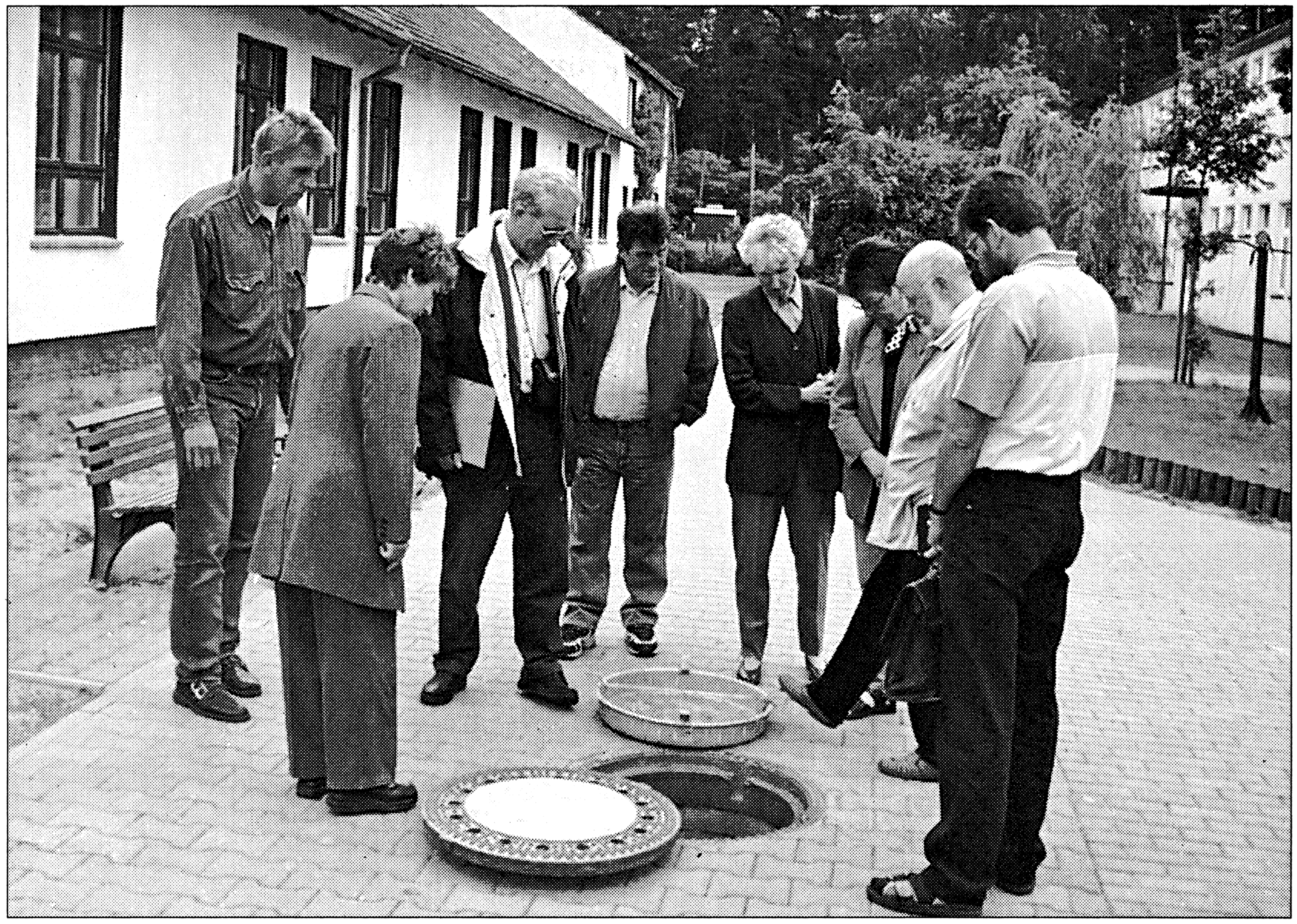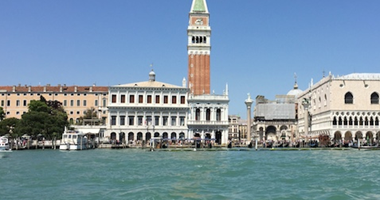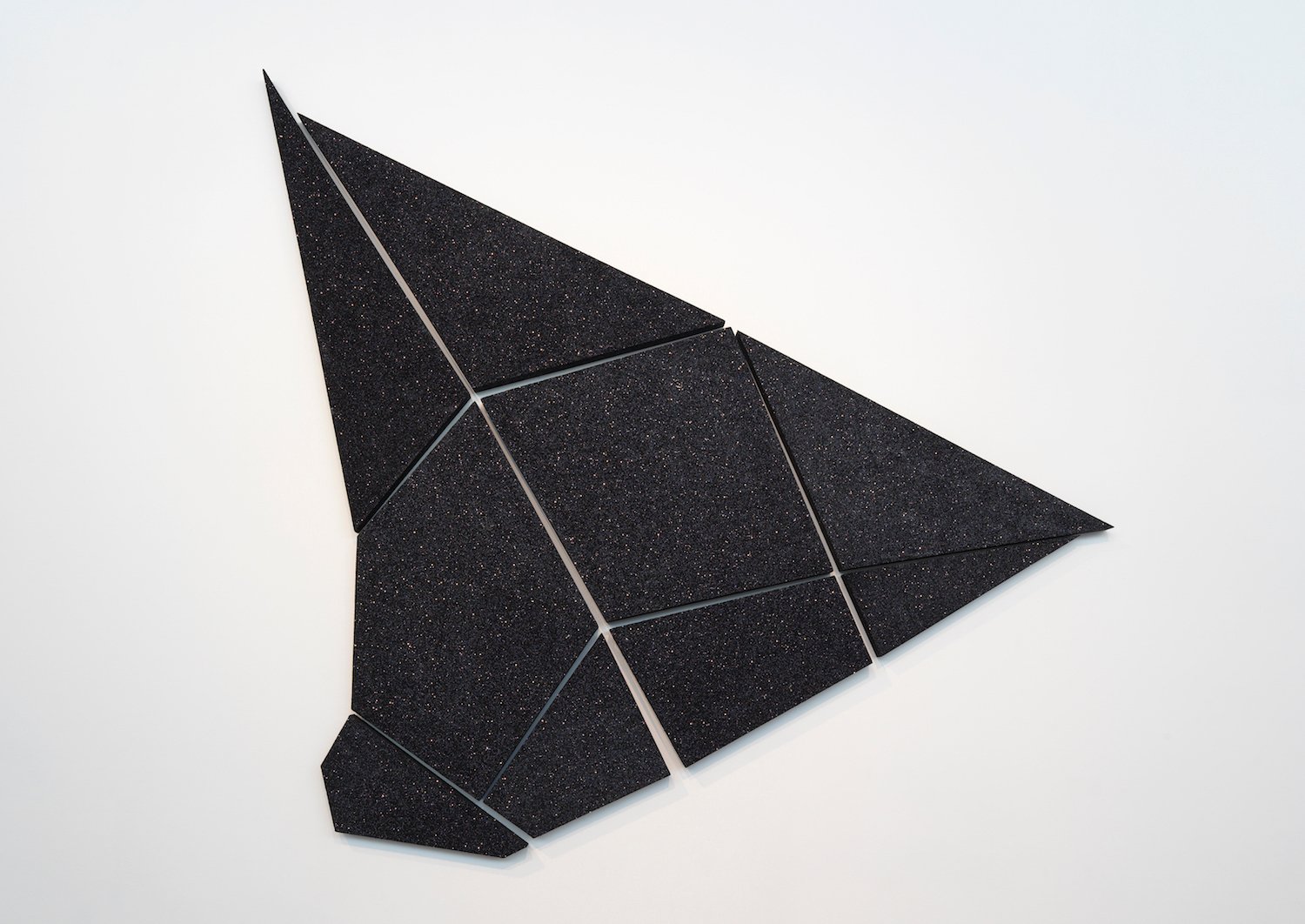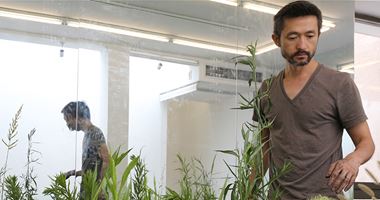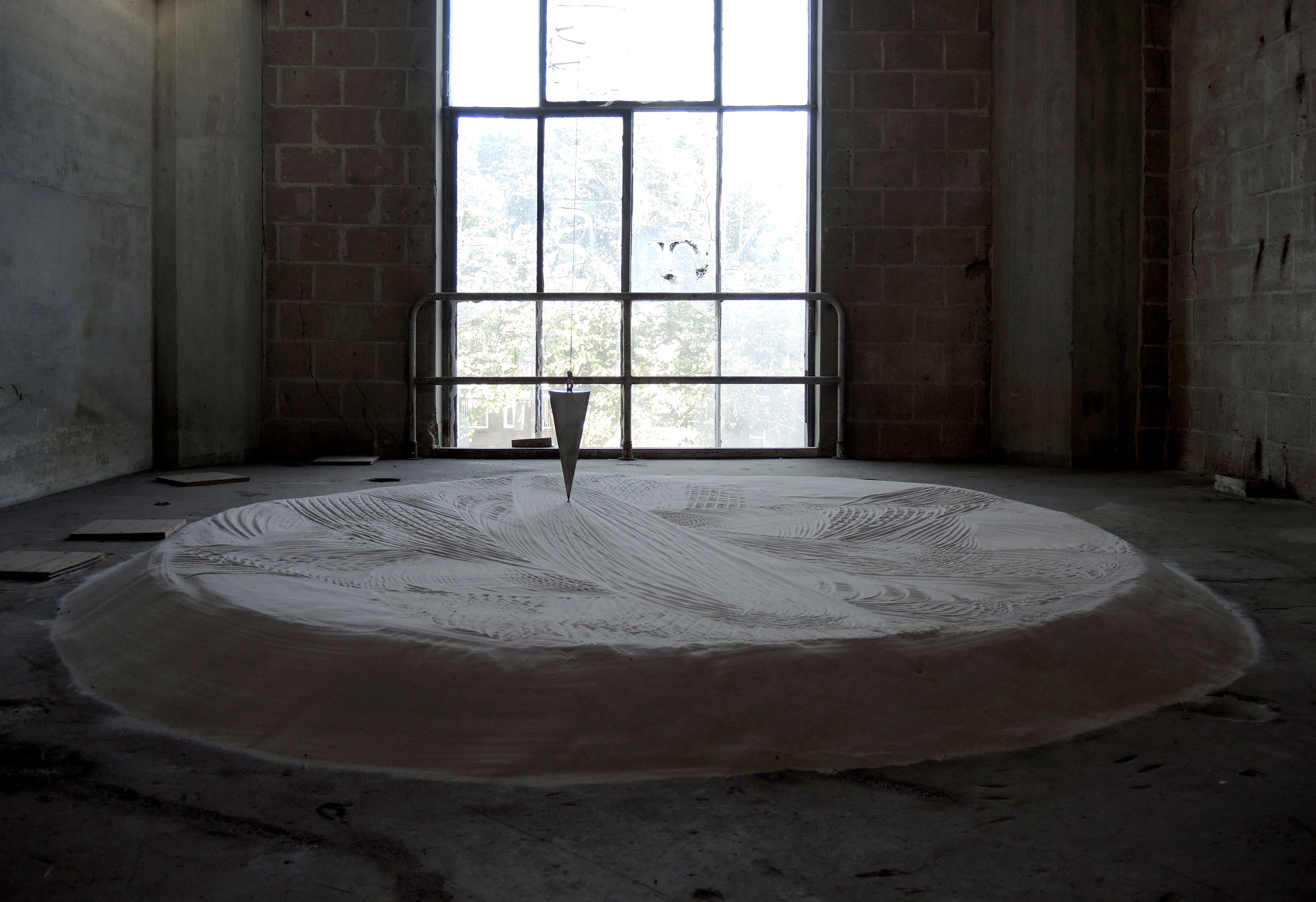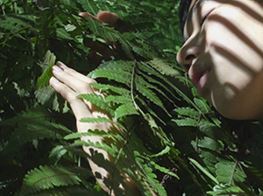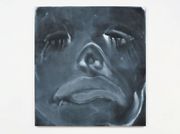Raqs Media Collective
Raqs Media Collective. Photo: Courtesy Dreamvilla.
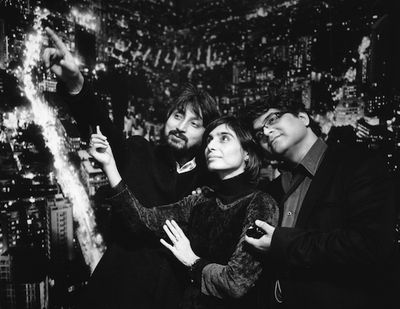
Raqs Media Collective. Photo: Courtesy Dreamvilla.
The 11th edition of the Shanghai Biennale (SHB 11) opens to the public on 12 November 2016 under the chief curatorship of the New Delhi-based Raqs Media Collective. Anchored by the idea of biennial-making as a form of posing questions, the SHB 11 is titled Why Not Ask Again: Arguments, Counter-arguments, and Stories.
In this Ocula Conversation Srinivas Aditya Mopidevi speaks to members of Raqs Media Collective (Jeebesh Bagchi, Monica Narula and Shuddhabrata Sengupta) on the relevance of engaging with the biennial form today, and their specific plans for the SHB 11.
The form of the biennial is currently situated between the conceptual states of excess and exhaustion. The collective discourse produced from the hundreds of biennials that take place all over the world is fostering a sense of hyper-saturation in the field.
Both the curatorial narratives and the artists that take part in these mega-scale events are often repetitively framed, insofar as they become merely symbolic of today's wider socio-political events. This situation led me to think about the idea of exhaustion as a way to frame contemporaneity within a biennial context. The moment of exhaustion is a generative state where existing imaginary resources are burnt out and in order to proceed new forms must be invented. Does the conceptual premise of the 11th Shanghai Biennale, 'Why not ask again', allude to and develop from this productive condition of exhaustion?
Exhaustion has emerged as a provocative turn in thought in the last few years. It has been tagged to the concept of labouring bodies, and has found itself annotating the destiny of hydrocarbons, immaterial labour, fresh water, minerals, the ozone layer and oxygen, among many other things. Meanwhile, the global GDP in 2013 was over 75 trillion dollars. In 1990 it was 28 trillion dollars, and in 1950, 4 trillion dollars. These shifts emerge from complicated calculations that tell us some things and also do not tell us something else. We are in the midst of an unprecedented acceleration in productivity, labour processes, access to raw materials, mobility, deployment, and the distribution of surplus. Art is in some measure a site, a spike, within this seismic upheaval. This shift—what we in Raqs call 'threshold time'—overflows with excess and exhaustion, extension and shrinkage, boom and bust. There is no Archimedean point outside its jagged edge.
On the other hand, this time of exhaustion is also the time of another kind of renewal—the emergence of new journals, of new film festivals, new student groups, new sites of de-occupation, new friends, and new recipes are all very welcome. They show an inherent desire for lateral extensions and expressions. They make us move.
Relentless conversations with so many people across disciplines, practices, and borders bring energy, confusion and insights. Lantian Xie, an artist based in Dubai, captured this elegantly in a social media post: 'A few weeks ago, I spent some time in Shanghai with the biennial's curatorial team. At some point in our conversations, their words seemed to pull apart and loosen their shapes, turning into tempos, melodies, interruptions, syncopations. It was then that I began to suspect that I was in fact in the company of a jazz band in full swing'. Making a biennial can possibly become a weave of praise, of other dissimilar sensibilities and improvisations.
Why Not Ask Again does not affirm or negate—or elide over—the present pandemonium. It is trying to bring into play a panoply of vantage points, itineraries, and imaginaries. It seeks to foreground a way to tap into subterranean and imperceptible forces, perceptional edges, hibernating conversations and interrupted journeys, as it leaps into heretical historical detours, into speculative geographies.
During a conversation in Delhi that Monica had with Peter Piller, whose work uses found material from small-town newspapers in Germany, and after hearing him talk about the exhaustion and serendipity he experienced while spending endless years inside photo archives, she observed: 'Perhaps it is only when you are exhausted and have exhausted all your curiosities and ways of seeing that you are aware of, that an unknown vision erupts for you'. Maybe we are all in wait, on the cusp of exhaustion and eruption.
SAMWhen biennials began proliferating two decades ago, they coincided with new global forms of exchange and circulation and were framed as an alternative to museological exhibition practices. The key binary between these two approaches is that conventional institutions are occupied in both recovering the past and appropriating the present, while, in contrast, biennials instead insist on a critical reflection of the present in speculation of the future. Recent instances include All the World's Futures, curated by Okwui Enwezor, (56th Venice Biennale, 2015), and The Eighth Climate (What does art do?), led by Maria Lind, (11th Gwangju Biennale, 2016). Will this specific emphasis on art as a site of the present and the future (both as a prediction and possibility) continue to influence the framing of biennials and the making of the art?
RMCRecently, during the opening of the 11th Gwangju Biennale, we were in a discussion with Babi Badalov, exiled artist from Azerbaijan, now based in Paris. For Babi, biennials are critical mobilisations that need to keep questioning how the narrative and multiplicity of location are formed because that affects the poetics of affirmation—the hues and textures of the relations that are produced in a biennial—as well as the kind of provocations being proposed.
To us, the contemporary is a space to join in the ridiculed and halted Bhole ki baraat (the marriage procession of Shiva). Shiva's wedding party was a raucous procession of wild animals, outcasts of all kinds, ghosts, and goblins with distorted, imperfect bodies, unresolved consciousness, in delirious moods and states of being. The story of Shiva's wedding ends with the god dancing in rage in response to being insulted by his in-laws for the nature of his companions. Shiva appears to have been Nietzsche's favorite god. Such processions will always find it difficult to enter history and, by extension, the museum. Rather, these unruly energies are detours. They take paths and seek connections that are not yet there; they play with instruments whose sound is yet to find an amplifier. Biennials are on that cusp that Hannah Arendt marked as the present: the indistinct zone between 'has been' and 'not yet'. It is a tightrope dance, like in the Paul Klee painting, Tightrope Walker (1923).
SAMThe emphasis on the 'politics of a place' is becoming an increasingly important framework for biennials. This comes with the rising pressure faced by curators when working outside of their own local contexts, to both ethically and generatively work in a way that is informed by the discourse of the host. How did you, as curators of the 11th Shanghai Biennale, envision the selection of artists for a Chinese audience and their positioning in the local context of Shanghai?
RMCOn our first curatorial visit to Shanghai, we met the young artist Yu Ji. Along with her practice—where she explores forces of nature—she has created a studio-residency process for other artists in her studio space. We found this enfolding invitation for others very moving and challenging. With subsequent visits, we have begun to understand that there is a way in which artists in Shanghai, Guangzhou, Beijing, and other places activate and support each other. One young artist downloaded ten gigabytes of videos, images, and other material of all his artist friends so that we could look at everyone's work when we visited Guangzhou. We also got the same feeling in Radical Space, a project space in Shanghai. This conviviality, this specific tonality of living, is probably what makes a place expressive amid the intensity of the acceleration these cities in China have witnessed.
In her acceptance speech of the 2012 Kyoto Prize in Arts and Philosophy, Gayatri Chakravorty Spivak described her journey eloquently as one woven in many voices and lives that continue to speak through her as 'the gift of spirit'. This gift is a special one as it lives within and uncoils over long years with newer insights and dimensions. This spirit is in many ways visibly present among the artists in these cities. Within the biennial, we are trying to draw in energies that expand on this sense. This is one trajectory of our approach for the biennial.
The biennial also positions many works from artists in China as conceptual fulcrums around which other works from other locations gather, making new readings possible. Zheng Bo, an artist who extensively researches and creates social extensions of artistic practice, confirmed an observation that we made: that in China the space of contemporary art is becoming a crucial site where people of the younger generation stay and converse. This has definitely made an impact on the ways we have looked at the work being made and imagined by the incoming generation of artists.
SAMRecently, there has been a rising debate about the necessity of scaling down biennials and controlling their pre-occupation with spectacle. The aim has been to generate initiatives that are more small scale, experimental and sustainable. The 6th Moscow Biennale of Contemporary Art (2015), for instance, was staged as a ten-day gathering rather than a conventional exhibition. Do you consider this shift as a productive direction for biennials to head towards or would it mark a regression, signalling the biennial's inability to live up to its original ambitions?
RMCWhen the curators of the 6th Moscow Biennale suddenly found that they were strapped with minuscule resources and a shrunken space, they did not abandon the biennial. Instead, they acted with agility, inventing a challenging scale and an intensification of time. This is the propositional quality that biennials are attentive to. Ideally, a biennial should run for two years, slowly morphing, and then after two years, make a course change with fresh energies and diversions. We first talked about this in our essay for e-flux, 'Earthworms Dancing: Notes for a Biennial in Slow Motion'.
Close to home, the proposed Srinagar Biennale seems to be working out a unique model. They have put forth the proposition that you can iterate an event in the Srinagar Biennale from anywhere in the world. This is their way of transversally offering a disputed space—a space of violence by the state—as a platform that thinks itself globally. This is bold, as it opens out a radical re-thinking of the relation between place and event.
Manifesta 6: The European Biennial of Contemporary Art (which was supposed to take place in Cyprus) did not go ahead due to political reasons. Manifesta suffered a major financial loss and yet, despite that, the model that had been proposed by the curators of Manifesta 6—of the biennial as a school—has shaped the subsequent discourse of exhibition making.
SAMRaqs' engagement with curatorial practice has, from the very beginning, been about seeing the exhibition format not as a singular event that has a specific beginning and an end, but as a prolonged activity over time, during which a constellation of ideas congregate and find habitation. This method unbinds the otherwise static configuration of an exhibition into a different dialogue that is more flexible and open. For SHB 11, how will you continue to build on the idea of duration, a principle feature of Raqs' earlier projects, and critique prevalent exhibition forms?
RMCExploring the time-field that a biennial offers is exciting. It conjures up two specific directions: one is to expand into the city, and another is to thicken the experience of time in the exhibition. There are two processes we are working with. The first is the '51 Personae' project, which is being developed with Chen Yun (with whom we have been in conversation for the last six years), looking at entire unrecognised life zones of the city and bringing them into a space of co-existing visibility. Chen Yun is working with a group of young artists, teachers and researchers at Dinghaiqiao Mutual-Aid Society to meet people and create scenarios emerging from their desires, fantasies and aspirations to make gatherings. This will happen throughout the exhibition period and spread out all over the city. The second process or axis that we have conceptualised and are developing with Liu Tian, a member of our curatorial collegiate, and Yao Mengxi, scenarist, is called 'Theory Opera'. Here we turn the exhibition space into a site for an experiment on what we term the 'sensation of thought'. This will draw in academic research, performative procedures, music, and improvisational display modes. Through both these durational modes, the biennial should be able to give us a new form of doing, singing, thought and mutuality.—[O]

